What I’ve Learned: Wild Blueberries vs Cultivated Blueberries
Did you know there are two types of blueberries: wild and cultivated?!
Say what what?
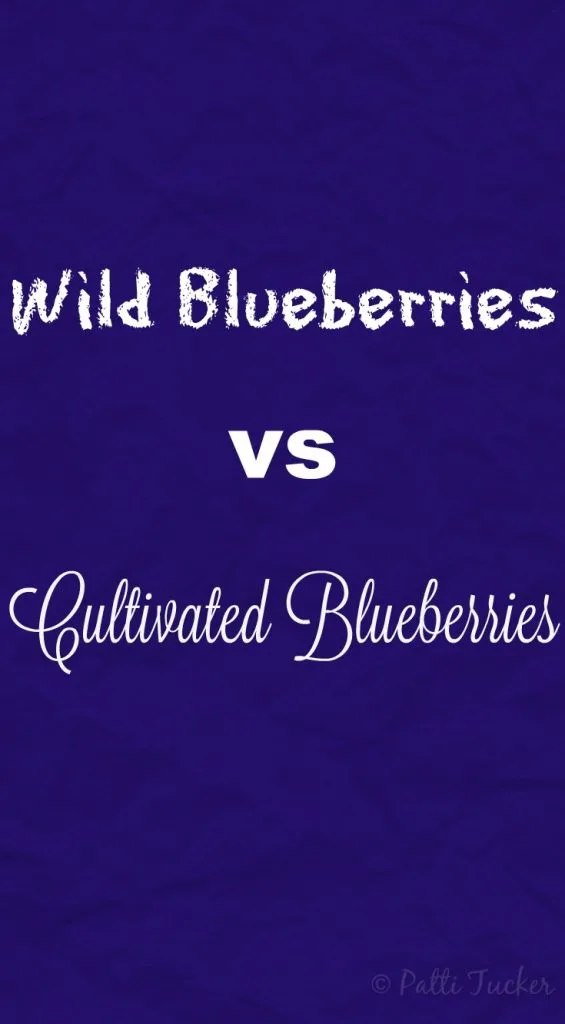
Those tiny blue spheres of yum fall into two groups?
I’m ahem years-old, and I had no clue until recently.
NO CLUE!
Where the heck have I been living? In a strawberry patch?
Let’s talk about the delicious, nutritional powerhouse, blueberry.
I love a good discovery moment (don’t you?) and this was one of them.
Before we begin – are your blueberries walking on the wild side?
Or – are your blueberries cultivated and speak with a fake English accent, gov’ner.
Do you how to tell them apart?
So. Many. Questions.
Luckily, I did some research.
Quick lists of distinction between types of blueberries:
Cultivated blueberries:
- Cultivated (considered highbush) blueberries grow on bushes.
- They are larger and plumper than their counterparts, containing a higher percentage of water content.
- They have a less distinct blueberry flavor than wild, yet can be sweet.
- While a nutritious berry, they contain less antioxidants than the wild berries, possibly because of their higher water composition.
- Kidlets will eat ’em like candy (shhhh, no spilling the beans!).
Wild blueberries:
- The smaller compact “wild”(considered lowbush) blueberries grow closer to the ground and spread by rhizomes.
- Wild blueberries contain more of the antioxidant anthocyanin and more antioxidants per serving than their cultivated counterpart.
- Anthocyanin, which is a powerful antioxidant AND responsible for the blue coloring, is believed to protect against brain aging and promote vision health.
- You only need a 1/2 cup serving to get a powerful dose of the super powers of this delicious berry.
- They are tiny taste bombs! Wild berries are sweeter (with just the right amount of tartness) than the bigger cultivated berries.
The benefits of blueberries are many, wild or cultivated.
I’m a snacker, hear me nom! But, snacking can get thee o’waistline in trouble.
That’s why I tend to gravitate towards snacks that are packed with nutrition AND taste good (when yer snack tastes like candy, but isn’t, all the better!).
I like when I can get a few servings of fruit without feeling deprived, don’t you?
Blueberries bring a nutritional and antioxidant powerhouse to your snacking world.
A cup of wild blueberries will run you about 80 calories.
They are also the most nutrient dense berry that Mother Nature produces:
OMT likey! And you should too, if you’re on the hunt for a delicious nutritious snack that likes to masquerade as candy (um, I LOVE candy!).
Another benefit of blueberries published in the test-tube study below, is its cancer fighting properties.
The dose of blueberry in our in vivo study is equal to a fresh blueberry intake of 25 grams/kg. With a conversion to human dose (based on surface area) (49), this is equal to 2.03 g/kg human or 122 grams (4.3 oz) of fresh blueberries/day for a 60 kg person. A single serving of fresh blueberries is 6 oz. which is an attainable intake for the average person. Therefore, blueberry intake could be an important part of dietary cancer prevention strategies.
Where do blueberry bushes grow in the US?
Cultivated highbush blueberries: Blueberry bushes can pop up all over the U.S., and while 38 states grow blueberries commercially, ten states account for more than 98% of U.S. commercial production: California, Florida, Georgia, Indiana, Michigan, Mississippi, New Jersey, North Carolina, Oregon and Washington.
Wild lowbush blueberries: Maine is the largest producer of wild blueberries in the world. Maine produces 10 percent of all blueberries in North America, including wild and cultivated production.
Isn’t it fascinating?
Until I discovered there was a blueberry I loved, a blueberry that didn’t make me squinch at the thought of eating it, I had no idea there were different types available for my snacking needs!
The backstory that might help explain my tardy arrival at all things blueberry: I do not like fresh cultivated blueberries, no matter how hard I try, and didn’t know I had options.
In the past, about once a year, I would try to like cultivated berries; I’d convince myself that this time I’d love them.
Why?
Because so many of you do and your love of all thangs blueberry make me feel like I’m missing out on deliciousness.
I like deliciousness.
I WANT DELICIOUSNESS!
I would remind myself they’re antioxidant powerhouses, they’re nutrient-dense, low in calories and high in nature’s goodness.
But, the minute I would bite down on one, I scrunch my nose and spit it out.
~ ALL THE BLECHS ~
I found them bitter and kinda flaky and just too weird for me to stomach.
Yet, I continued to buy them (because of their nutritional powerhousey ways) and throw ’em in smoothies.
I didn’t like it, but I considered it important enough to include them in my diet.
Where can I buy wild blueberries?
Then, a simple Costco run changed my mindset about blueberries.
You can buy wild blueberries at Costco (and most likely any good grocery store)!
Organic wild blueberries are the best of the best!
There I was, getting what we needed, not thinking anything odd about the bag of frozen blueberries I tossed in my cart, other than the new package design, and oh hey, they were organic and a bit higher priced than I was used to paying.
Meh.
We needed them, so I tossed them in the cart.
As soon as I got home, in the freezer they went and I didn’t think about them again until I was making a smoothie and begrudgingly thought to add a few blueberries.
While the blender was blending, I absentmindedly popped a few berries into my mouth, hoping against all things hoped, that today I would love them…and. I. did.
My favorite blueberry smoothie got even better.
I was making this smoothie (recipe card included at bottom of post) :
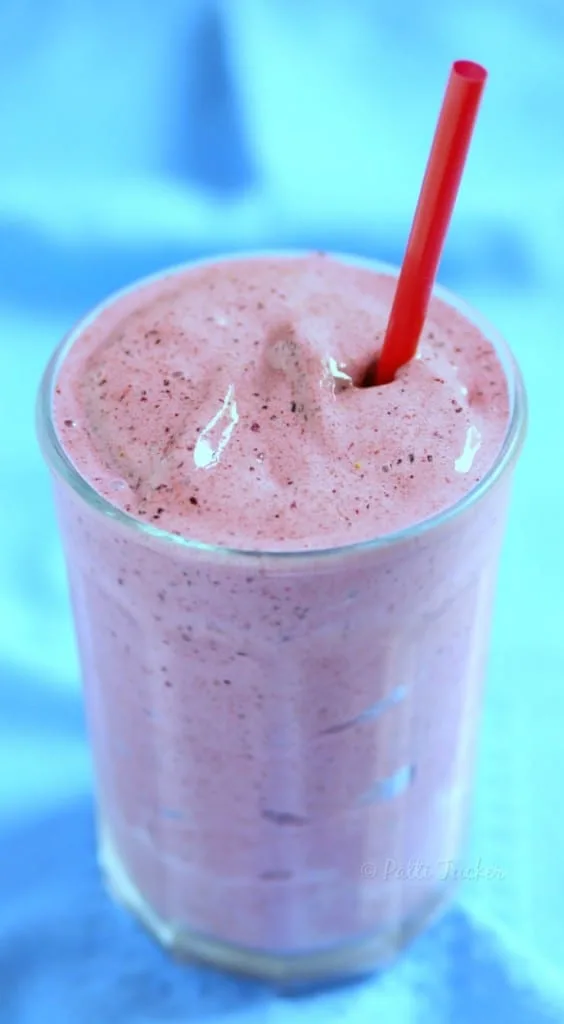
What the heck?!
I did a Scooby-Do double take.
I looked at the bag, then looked at the berries, then looked back at the bag and finally my brain kicked in: something’s different here, Patti.
I love my brain. Always doing the heavy lifting.
The berries were much smaller and bluer (was that possible?).
I popped a few more in my mouth.
Yep, good!
Nommy Nom Nom.
Sweet, with no hint of the bitterness or weirdo flakiness of the cultivated kind.
It was then I carefully examined the bag and realized the berries I instantly fell in love with were of the wild variety.
Whoa.
Just like me…wild, sweet, and with just the right amount of tart.
~snort~
As soon as I was done berry smoothie making, I Googled blueberries, wild blueberries specifically, and my former hate of all things blueberry, gave way to the love of the wild.
My favorite cultivated blueberry muffin recipe:
While I adore a wild blueberry and I’m not fond of fresh fatty blueberries, I love to bake with cultivated blueberries.
This blueberry banana oatmeal muffin is not only incredibly delicious, it’s vegan too! You know, if you’re into that sort of thing.
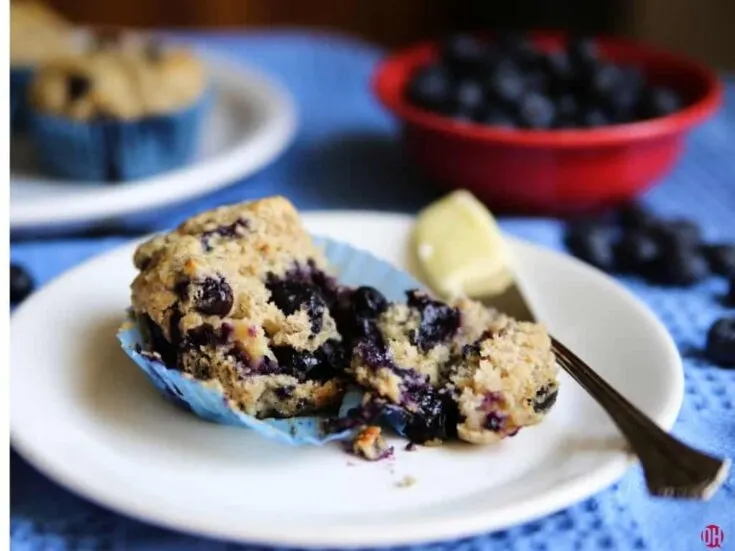
This is Garry’s absolute favorite muffin (healthy version). He says it “tastes like cake.”
Can’t beat that review!
Let’s review wild vs cultivated blueberry benefits, shall we:

Get ready for some TRUTH about wild blueberries antioxidants:
Not only are they sweeter, wild blueberries pack an even harder nutritional punch than their cultivated counterpart, as they contain more of the powerful antioxidant anthocyanin and demonstrate greater antioxidant capacity per serving than cultivated blueberries.
Laboratory studies show that wild blueberries are a leading antioxidant fruit.
Regular blueberries are great too, if that’s all that is available.
Blueberries are packed with nutritional power.
The pigments (anthocyanins) that make them blue are potent antioxidants.
Fruit that tastes like candy and can combat disease and can help me see in the dark?
I’m in!
And you should be too.
If you’re interested in the lowdown nitty gritty nutritional facts of wild blueberries: CLICK HERE.
All the info you can stand!
The one eye-popping bit of nutrition that stood out to me, as a woman with an eye on bone health: 1/2 cup of wild blueberries has 100% the daily recommended amount of manganese, which is vital for bone development.
Finally, the cherry on top of this nutritional good news, is that wild blueberries are available year round frozen.
I personally buy them frozen, so there is no waste (plus, you can’t get the wild blueberries fresh year-round where I live, so there’s that).
I eat ’em until they are gone, then make another Costco run for more.
HUZZAH!
Pro Life Tip: Search “Wild blueberries near me.”
Buy organic blueberries whenever you can. Yes, they are a bit more expensive, but conventionally grown blueberries have a high pesticide load.
OMT, no likey!
If you find that there are few places near you to buy organic blueberries, hit up your local high-end grocer.
So tell me: Did you know there was a difference between wild vs cultivate blueberries nutrition?
DID YA?!
If not, now you do!
Happy snacking, smoothie-makin’ and baking, y’all!
Psst, don’t go yet, here’s three delicious recipes:
Delicious No-Sugar-Added Blueberry Strawberry Smoothie
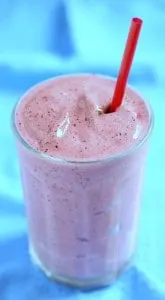
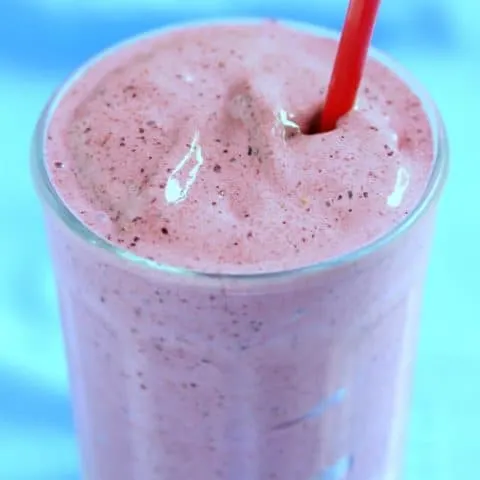
Strawberry Blueberry Smoothie
Ingredients
- 1 cup frozen strawberries
- 1 cup frozen blueberries
- 1 cup milk (any type - I use whole milk)
Instructions
- Place milk in blender.
- Add frozen fruit.
- Puree
- Pour into tall glass, insert straw and watch for freezer brain!
Notes
If your blender struggles with frozen fruit, you can add small bits at a time - or - thaw fruit for a few minutes before adding to blender.
I prefer wild blueberries because of their sweetness.
This recipe works well with any combination of fruits.
Recommended Products
As an Amazon Associate and member of other affiliate programs, I earn from qualifying purchases.
-
 Webake 144 Pack Biodegradable Paper Straws Stripes 7.75" for Birthdays, Holiday, Weddings, Baby Showers, Celebrations, Parties, Valentine's Day Cake Pops (Red)
Webake 144 Pack Biodegradable Paper Straws Stripes 7.75" for Birthdays, Holiday, Weddings, Baby Showers, Celebrations, Parties, Valentine's Day Cake Pops (Red) -
 Fun Express Blue Striped Paper Straws - 24 Piece Pack
Fun Express Blue Striped Paper Straws - 24 Piece Pack -
 10 Inch Drinking Straws (250 Straws) (10 Inch x 0.28 Inch) (Red)
10 Inch Drinking Straws (250 Straws) (10 Inch x 0.28 Inch) (Red) -
 Blendtec Total Classic Original Blender - WildSide+ Jar (90 oz) - Professional-Grade Power - 6 Pre-programmed Cycles - 10-speeds - Red
Blendtec Total Classic Original Blender - WildSide+ Jar (90 oz) - Professional-Grade Power - 6 Pre-programmed Cycles - 10-speeds - Red
Nutrition Information:
Yield: 1 Serving Size: 1Amount Per Serving: Calories: 269Total Fat: 6gSaturated Fat: 3gTrans Fat: 0gUnsaturated Fat: 2gCholesterol: 20mgSodium: 133mgCarbohydrates: 48gFiber: 8gSugar: 22gProtein: 10g
Nutrition information isn't always accurate.
The Best Strawberry Smoothie Recipe
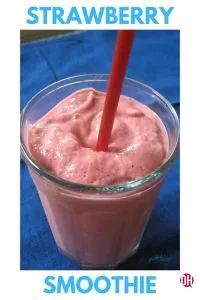
Not in the mood for a smoothie? How about a blueberry muffin?
I gotcha covered!
Blueberry Banana Oatmeal Muffins
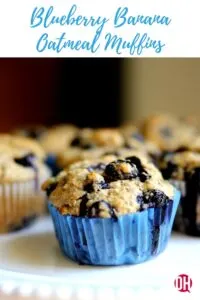
~Please feel free to Pin, Tweet, Facebook or otherwise share this post. OMT smooches!~
Originally posted February 6, 2017. Updated May 18, 2022
I hope you enjoyed this post: What I’ve Learned: Wild Blueberries vs Cultivated Blueberries.
Now, go make a smoothie (or two) and make sure to bake those blueberry muffins!

David Spahr
Friday 29th of July 2022
I live in Maine. Most people including many Mainers don't know there are WILD highbush blueberries. The berries are small and sweet like the lowbush. Pretty much the same. I do have lowbush here as well. I have about 40 wild bushes around my house I dug from the woods. I have had them a long time and most are huge. I also have 5 cultivar bushes. Chandler, Jersey, and earliblue. None of the cultivar bushes can beat ANY of the wild bushes. I have never tasted a cultivar that can match them. Not even close. No one who has sampled both kinds in my yard ever though the cultivars even came close to winning. The birds agree. The best cultivars I have tasted came from Chile. Still not a winner. The wild bushes out produce the cultivars as well. They don't take years off. The familiar wild lowbush esp. when fresh are also incomparable.
Patti Tucker
Friday 29th of July 2022
Wow! Amazing to have so many bushes and availability of those delicious wild berries around your house. Thanks for the interesting info.
jan
Thursday 5th of May 2022
Hey, a heads up. Costco no longer sells organic wild blueberries (at least not in Canada). They've replaced wild organic with wild that has lots of pretty words on the package but through phone calls to Costco and also the company that grows the wild blueberries, I have been unable to obtain clear information on how the wild blueberries are grown but they are definitely NOT organic. Don't be fooled. Hold them accountable. No lies on the package, just very misleading information.
Patti Tucker
Thursday 5th of May 2022
I will check next time I'm in. I know they have changed companies, but I thought still organic wild. Thanks for the heads up.
Gerry
Saturday 1st of January 2022
I have spent ages trying to find berries with the actual flavor that is “blueberry.” When I shop for them, I would always taste a berry or two before purchase. Since no one labels blueberry varietals except occasionally farm markets, I have to do this. Yet the result is discouraging. Only once in a great while do I find berries with true flavor of blueberry. One reliable varietal I found was Bluecrop, available in NJ in early July. As you state here, wild blueberries are the only reliable option. I buy Wymans from Maine, available here in several supermarkets. My luck with fresh cultivated has been slightly better in winter with berries grown in Peru or Chile, until recently when it seems more growers have started to grow the more tasteless varieties found during summer in USA. We need much more disclosure on varietals/cultivars to isolate the finest of cultivated berries.
Patti Tucker
Monday 3rd of January 2022
This is why wild blueberries are my blueberry of choice!
Mother of 3
Wednesday 17th of July 2019
We have wild blueberries that grow right near our house and a cultivated blueberries that my husband's aunt grows so we've noticed a difference but we aren't particular about which ones we use (though I do prefer the sweeter flavor punch of the wild ones). We just went to try picking some this weekend but they aren't quite ready yet.
Patti Tucker
Wednesday 17th of July 2019
Oooo, lucky you to have blueberry bushes!
Jean | Delightful Repast
Thursday 25th of April 2019
I'm with you, Patti--I always buy organic, fresh or frozen, and much prefer the wild blueberries. #HearthAndSoul
Patti Tucker
Thursday 25th of April 2019
Love those wild berries!